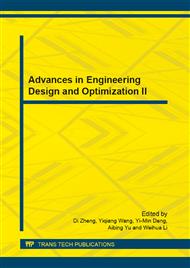p.717
p.723
p.727
p.732
p.737
p.743
p.751
p.755
p.759
On-Line Monitoring of Yogurt Fermentation Using Acoustic Impedance Method
Abstract:
A non-contact ultrasonic system to monitor the yogurt fermentation process through a stainless steel reactor wall is described. During the process, the acoustic impedance was determined by using multiple reflections of ultrasound within the stainless steel wall. Thus, the wall was part of the measurement system. By basing on measurement multiple reflections, the instrument sensitivity is increased by the power of the reflection coefficient. Experimental results show that the acoustic impedance changes continuously while pH declines. It is very useful, especially on production scale for yogurt that the acoustic impedance measurement does not demand a liquid transparent to ultrasound. Also, this noncontact sensing method can reduce the risk of food contamination from measuring instrument, and contribute to hygienization for food manufacture industries.
Info:
Periodical:
Pages:
737-742
Citation:
Online since:
September 2011
Authors:
Price:
Сopyright:
© 2012 Trans Tech Publications Ltd. All Rights Reserved
Share:
Citation:


